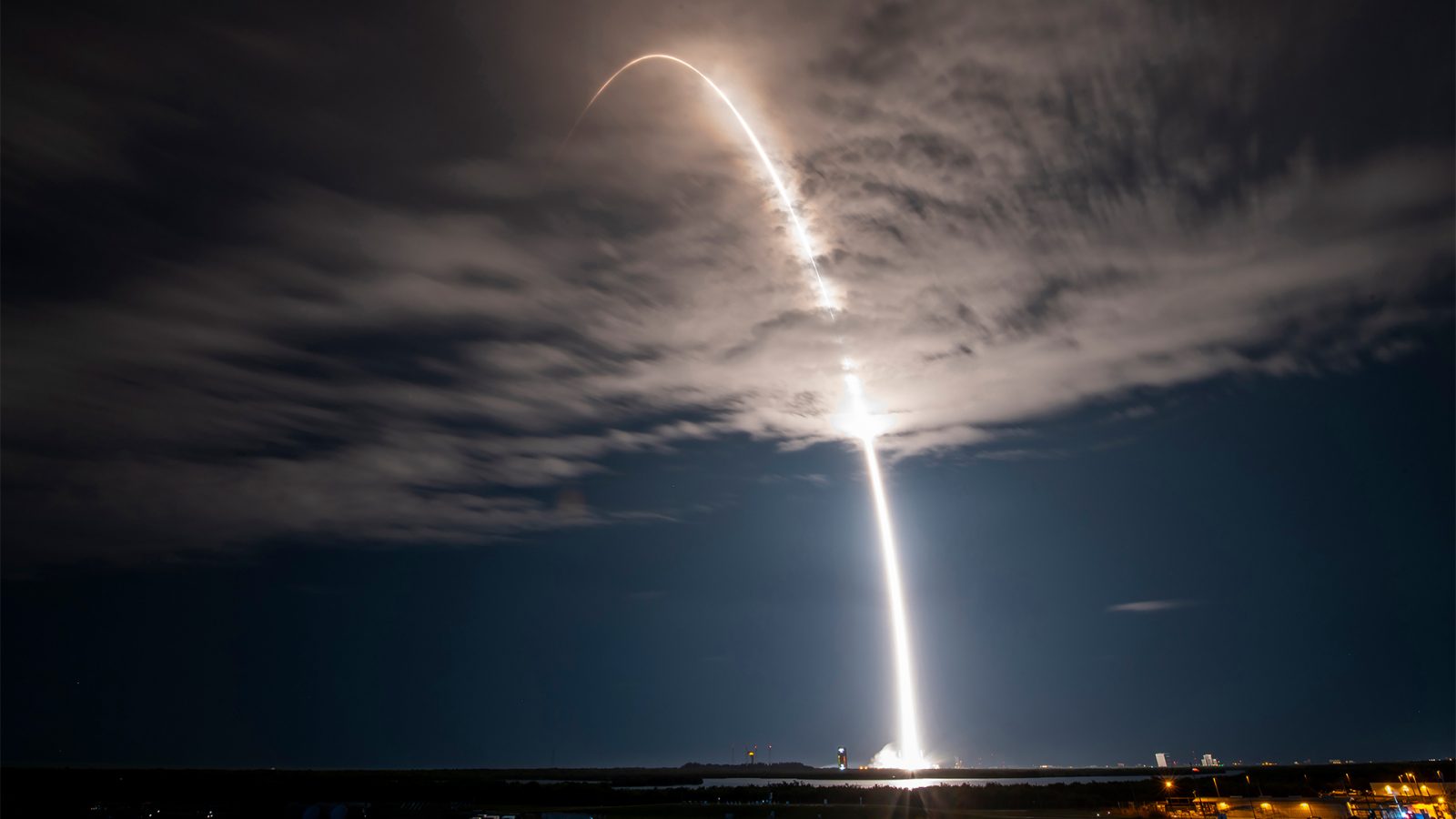
This week turned out rather more exciting than originally expected when I discussed the week’s launches on Monday. Tuesday morning, Rocket Lab’s eighth Electron launch of the year suffered a failure on the second stage and SpaceX yet again broke its reuse record on a single booster.
SpaceX launches a booster for the 17 time
SpaceX launched its latest batch of Gen 2 Mini Starlink satellites from SLC-40 at Cape Canaveral Space Force Station, Florida late Tuesday evening. A mission we’ve seen over and over again. They have really lost their flair for many of us that have been watching SpaceX launch for years.
While SpaceX launching several times a week has gotten rather routine, the excitement in these Starlink launches come in knowing the company is pushing its rockets to its limits. We have no idea if that launch is the one we see where the Falcon 9’s limits are found, so we still watch.
Tuesday’s Starlink mission featured one of those milestones. SpaceX Falcon 9 booster serial number 1058 launched and landed for the 17th time.
B1058 isn’t you normal Falcon 9 booster, this one has some history behind it. The divide in the community is real with many actually upset with SpaceX this booster hasn’t been moved to a museum yet. With other saying it should continue flying and doing its job.
B1058 started its life in a time where SpaceX was launching brand new boosters fairly regularly. Nowadays seeing a new booster is more newsworthy than reflown ones. In 2020, B1058 took its first flight, an important milestone mission for the United States and SpaceX. With the NASA worm logo painted down its side, B1058 lifted off from LC-39A carrying the first crew to launch from the US since the Space Shuttle retired in 2011.
B1058 to date is still the only Falcon 9 to have the NASA logo painted on the booster rather than the upper stage for crewed flights. Not that you can see it anymore anyways with the scorch marks that now cover the booster from top to bottom. There was never an official reason why NASA moved the logo off the booster for future mission. However, it’s believed to be because NASA wasn’t thrilled to see its logo on a rocket that launched a military satellite for South Korea later that same year.
If you look hard enough, you’ll be able to still see the iconic logo along one of its sides in place of the SpaceX logo.
Here’s a list of the launches that B1058 has completed:
- SpaceX DM-2 – May 2020
- ANASIS-II – July 2020
- Starlink v1.0 L12 – October 2020
- SpaceX CRS-21 – December 2020
- Transporter-1 – January 2021
- Starlink v1.0 L20 – March 2021
- Starlink v1.0 L23 – April 2021
- Starlink v1 L26 – May 2021
- Starlink Group 4-1 – November 2021
- Transporter- 3 – January 2022
- Starlink Group 4-8 – February 2022
- Starlink Group 4-17 – May 2022
- Starlink Group 4-21 – July 2022
- Starlink Group 4-2 – September 2022
- Starlink Group 4-37 – December 2022
- Starlink Group 6-5 – July 2023
It’s crazy to think about just how long this booster has been flying. I found Zac Hall, the founder of Space Explored at DM-2. That led to having him on Rapid Unscheduled Discussions, a podcast I was doing with original site photographer Daryl Saussé, which then led to me joining on as a writer. It has also been flying since before SpaceX’s Starship rocket was considered a real contender in the market, boy how that has changed.
Join our Discord Server: Join the community with forums and chatrooms about space!
How much further than they fly?
SpaceX is on the watch to see where the Falcon 9 booster’s breaking point might be. For now, it’s obviously not 16 launches and might as well be into the hundreds for all we know.
SpaceX goes over each booster before reflights and it sometimes may get new engines, which have their own lifespan. Flight proven boosters are essential now to SpaceX’s business as it rarely brings a new one into the fleet. Usually we only see brand new Falcon 9 boosters during Falcon Heavy missions where the center core is new and isn’t usually recovered.
Both NASA and the department of defense have approved use of flight proven boosters for its missions. NASA has even launched crew on reflown boosters and is something it rather prefers over brand new rockets.
SpaceX has single handedly changed the way we look at spaceflight. Now we question why a company isn’t offering reusability. Even though that isn’t always the answer to everything. But also, now fresh rockets out of the factory are seen as inherently more risky than boosters that have seen a few flights.
How high does the limit reach? Not even SpaceX knows that. Elon Musk has stated they will fly these boosters until failure. Because of that, we watch, and wait.
FTC: We use income earning auto affiliate links. More.




Comments